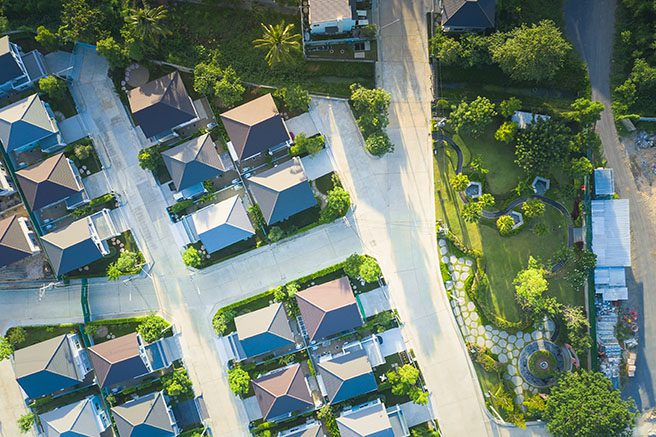As retirees look to other sources of income to supplement their retirement, many older Australians may be considering riding the coat tails of ‘generation rent’, relying on a steady rent as a retirement income. But is property a good investment when you are retired, looking for an income stream?
Recent research into the Sydney property market undertaken by William Buck, set to answer this question; comparing property income yields and market performance with various liquid portfolios. Here’s an analysis of the results.
The issue – lack of retirement income and a love of property
The residential property market in Australia can be a good investment while you’re working and accumulating wealth. The Australian Housing and Urban Research Institute reports that the inner and middle ring suburbs are typically the investment of choice, because they’re near employment nodes, have preferable lifestyles and are in high demand due to the lack of new area for development, which makes them a reasonable investment.
However, for retirees looking for an income stream, the current rental yields on a two-million-dollar investment property in Sydney – the market which has experienced the most growth in the past 5 years – would have a retired couple living below the poverty line, which for a single adult is 50 percent of the median income, or $426.30 a week ($852.6 for a couple).
In fact, a 50 / 50 market portfolio considerably beats the Sydney residential property market both in yields (income) and price performance (market value) over the longer-term.
Property market performance
Our research found that the Sydney Eastern suburbs would have a retired couple with $2 million-dollar property investments, returning an average of around $31,000 (or 1.52%) for a three-bedroom house and around $40,000 (or 1.96%) for two, two bedroom apartments.
As the tables below highlight, the Sydney Inner West (also typically an area of choice for investors) did not fare much better. Furthermore, the cost outlay figures used in our analysis are conservative and don’t account for large capital repairs, or additional contributions to strata for building works in the net income figures.
On the other hand, a diversified portfolio produced 1.59% more, or $15,890 more per $1m invested than Sydney property provides in net rental income.
| Inner West, Sydney | ||||
| House, $2m (%) | ($, pa) | Unit x 2 ($1 m each) | ($,pa) | |
| Rent | 2.45 | 51,220 | 3.58 | 71,507 |
| Vacancy Rate | 9.0 | -4610 | 9.0 | -6436 |
| Strata* | 0 | 0.3 | -6000 | |
| Land Tax | -6036 | 0 | ||
| Insurance | -1716 | -880 | ||
| Repairs and Maintenance | -2000 | -4000 | ||
| Water | -1142 | -1500 | ||
| Council Rates | -1692 | -2120 | ||
| Management, agent fees | 5 | -2561 | 5 | -3575 |
| Net Income | 31,463 | 46, 997 | ||
| Net yield | 1.57% | 2.35% | ||
Please note, this data was incorrectly cited in the AFR as Western Suburbs, Sydney.
| Eastern Suburbs, Sydney | ||||
| House, $2m (%) | ($, pa) | Unit x 2 ($1 m each) | ($,pa) | |
| Rent | 2.46 | 49,164 | 3.22 | 64,310 |
| Vacancy Rate | 10 | -4714 | 13 | -8105 |
| Strata* | 0 | 0.3 | -6000 | |
| Land Tax | -6036 | 0 | ||
| Insurance | -1182 | -834 | ||
| Repairs and Maintenance | -2000 | -4000 | ||
| Water | -1114 | -1500 | ||
| Council Rates | -1186 | -1526 | ||
| Management, agent fees | 5 | -2458 | 5 | -3216 |
| Net Income | 30,473 | 39,130 | ||
| Net yield | 1.52% | 1.96% | ||
Please note, this data was incorrectly cited in the AFR as Eastern Suburbs, Melbourne.
Relying on property for growth
What this means is that retirees would be heavily reliant on capital growth as the net yield is currently below 6-month term deposit rates. On a capital (price) growth perspective Sydney property under performed a diversified portfolio by 21% which is $210k per $1m invested.
Even if you could rely on the capital growth, you can’t eat a bathroom or a kitchen, you need to sell the whole property. Moreover, if property is your investment preference then you need to buy a cheaper one to free up cash. It also comprises stamp duty that you don’t get back or can earn income from.
Furthermore, even if the retiree has some liquid capital alongside the property, the accessible part of their investments would be consumed more quickly as a result. The capital growth on the property needs to compensate for this consumption of capital.
Investors overall should be asking what will drive future capital growth in residential property prices with interest rates already at historic lows?
Investment Comparisons – What are the alternatives?
Our comparisons found that when compared to a liquid portfolio, the outcomes get worse for property when you add in the yield differential. Looking at yields on the market index over the last twelve months, the average dividend yield for the ASX All Ords was 5.65% – that’s more than double the income stream on the current Sydney residential property market examples.
The obvious point here is that a retiree should not have 100% of their wealth tied up in Australian shares. However, If we assume they held 50% of their funds in Australian shares and 50% in Australian bonds as an example, the portfolio’s income would be 4.28% or nearly 2% above the inner west apartment yield (which had the best performing yields in the examples). That’s an increased income of $38,577 per year.
So, while yields are an indicator of the income stream, how does the overall performance of the Sydney residential property market fair for a long-term investment?
Looking broadly at price performance over the entire Sydney region, both property and portfolios are great asset classes.
Property
Since 2003 – when the Australian Bureau of Statistics started to measure – historical data shows that in a market value comparison alone, Sydney residential property price index, returned 101.52%, with a standard deviation of 35.94%. Whereas a market portfolio, returned 133.50% (price only) in the same period with a standard deviation (or price risk) of 39.02%. This rises when you factor in investment income (interest and dividends).
Diversified Portfolio
Alternatively, if you took a portfolio with fifty percent in fixed-interest bonds and fifty-percent in Australian Shares the market performance over the past fifteen years for the ASX All Ordinaries is 110.28% (still beating the Sydney property market). Yet, what’s more interesting is, that the standard deviation is lower, than the Sydney property market.
| Property v diversified portfolio based on $2m investment | ||
| Property Income | (%) | ($) |
| Houses – Eastern Suburbs, Sydney | 1.52 | 30,473 |
| Houses – Inner West Suburbs | 1.57 | 31,463 |
| Units – Eastern Suburbs | 1.96 | 39,130 |
| Units, Inner West Suburbs | 2.35 | 46,997 |
| Liquid Portfolio Income^ | (%) | ($) |
| 50% S&P/ASX All Ordinaries/ 50% Bloomberg AusBond Bank Bill Index 50% Bloomberg AusBond Bank Bill Index | 3.86 | 77,177 |
| 50% S&P / ASX All Ordinaries / 50% Bloomberg AusBond Composite 0+ yr Index | 4.28 | 85,557 |
| 50/50 Diversified Portfolio | 3.94 | 78,778 |
| Capital Return* | |
| Sydney Residential Property Index | 102 % |
| 50% S&P/ASX All Ordinaries/ 50% Bloomberg AusBond Bank Bill Index 50% Bloomberg AusBond Bank Bill Index | 90 % |
| 50% S&P / ASX All Ordinaries / 50% Bloomberg AusBond Composite 0+ yr Index | 110 % |
| 50% growth / 50% Defensive | 133 % |
Notes: The above data was incorrectly cited in the AFR as Western Suburbs, Sydney and Eastern Suburbs, Melbourne
^Liquid means funds in investors’ bank account on a T=3 basis
*Over past 15 years
Perceived risk – being priced everyday
Being priced every day, makes diversified portfolios seem like a higher risk investment proposition. However, if the property market was priced every day (like liquid portfolios are) then you would see investors being more concerned about property; particularly when you consider stamp duty is effectively a 4% entry fee.
What the above research shows is, a 50/50 liquid portfolio was less volatile – in other words – the standard deviation or price risk was actually lower than it was with Sydney residential property (the market darling). So overall, not only would you have out-performed the Sydney residential property market since 2003, the standard deviation (or price risk) is substantially less than the residential property market in Sydney, whilst also providing daily access to your money.
Key takeaway
It’s important to assess life stages to determine if property remains the most viable investment in your situation. While property can be a good investment when you’re accumulating wealth – particularly for its great tax efficiencies – it isn’t so great if you’re planning your retirement income.


































